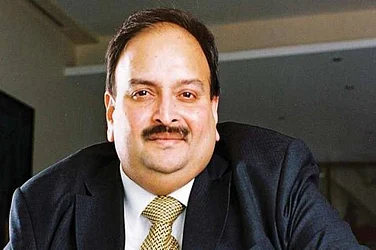
In 2023, India reported over 15,400 dowry-related cases and more than 6,100 deaths, roughly 20 lives lost every day, marking a 14 per cent increase from the previous year. Uttar Pradesh and Bihar accounted for the highest numbers.
Over 83,000 dowry cases were under trial in 2023, reflecting the judiciary’s growing caseload and limited progress in resolving these long-standing crimes.
Experts warn that harsher punishments alone won’t curb dowry-related violence; deeper social reforms, awareness, and improvements in investigation and prevention are essential to address entrenched gender inequality and patriarchal norms.
Dowry-related deaths continue to cast a long shadow over India, a grim reminder of how a centuries-old practice can still claim thousands of lives every year. In 2023 alone, at least 20 people died every single day due to dowry-related issues. According to the National Crime Records Bureau, dowry cases rose 14 per cent, with 15,489 cases reported nationwide and over 6,100 deaths recorded.
Uttar Pradesh and Bihar emerged as the epicenters of this crisis. Uttar Pradesh recorded 7,151 cases and 2,122 deaths, while Bihar reported 3,665 cases and 1,143 deaths. Karnataka followed with 2,322 cases. In contrast, thirteen states and Union Territories—including West Bengal, Goa, Arunachal Pradesh, Ladakh, and Sikkim—reported zero dowry cases. Maharashtra recorded 17 cases, Madhya Pradesh recorded 68 cases.
Southern states of Tamil Nadu and Kerala recorded 144 and 21 cases respectively. In terms of deaths, Maharashtra and Madhya Pradesh recorded 170 and 468 deaths respectively whereas Tamil Nadu and Kerala recorded 11 and 8 deaths respectively.
Across India, dowry was cited as the motive in 833 murder cases in 2023. In total, 13,479 and 13,568 dowry-related cases were registered in 2022 and 2021, respectively.
The judiciary bears the brunt of this social crisis. In 2023, 83,327 dowry cases were under trial, including 69,434 carried forward from previous years.
The mere fact that these numbers are being recorded may signal progress, victims’ stories are at least making it to official channels, said Naveed Mehmood Ahmad, the Senior Resident Fellow and Lead with the Crime and Punishment Team at Vidhi Legal. “Overreliance on courts, a trend dating back to the late 1970s and 1980s, has done little to stem the tide.”
He explained that government efforts tend to prioritise harsher punishments, such as the death penalty for dowry deaths. However, he emphasised that relying solely on punitive measures is insufficient to tackle an issue deeply embedded in societal attitudes, gender inequality, and systemic flaws within the criminal justice system. Ahmad warned that without comprehensive reforms in how cases are investigated, prosecuted, and prevented, India risks experiencing the same tragedies repeatedly.
Filmmaker and activist Vani Subramanian, who is also associated with the women’s collective Saheli, points out that even the most stringent laws fall short when ground realities remain unchanged. “The rising numbers paint a grim picture and even these figures may not capture the full truth. Many cases where individuals, pushed to the edge by dowry-related harassment, take their own lives often go unrecorded,” she says.
According to her, weddings in India have become capital-intensive events laden with social and financial expectations. “With this comes the deeply entrenched practice of dowry, turning what should be a celebration of love and partnership into a transactional affair. Harsh laws against dowry exist, but they are rendered toothless without effective implementation,” she adds.
While the rising number of reported cases indicates greater visibility and recognition of victims’ grievances, the persistence of dowry deaths underscores the urgent need for social reform, awareness, and stronger preventive mechanisms to address deep-rooted gender inequality. Dowry is not just a legal issue, it is a mirror reflecting social biases, entrenched patriarchy, and the human cost of tradition left unchecked.



























